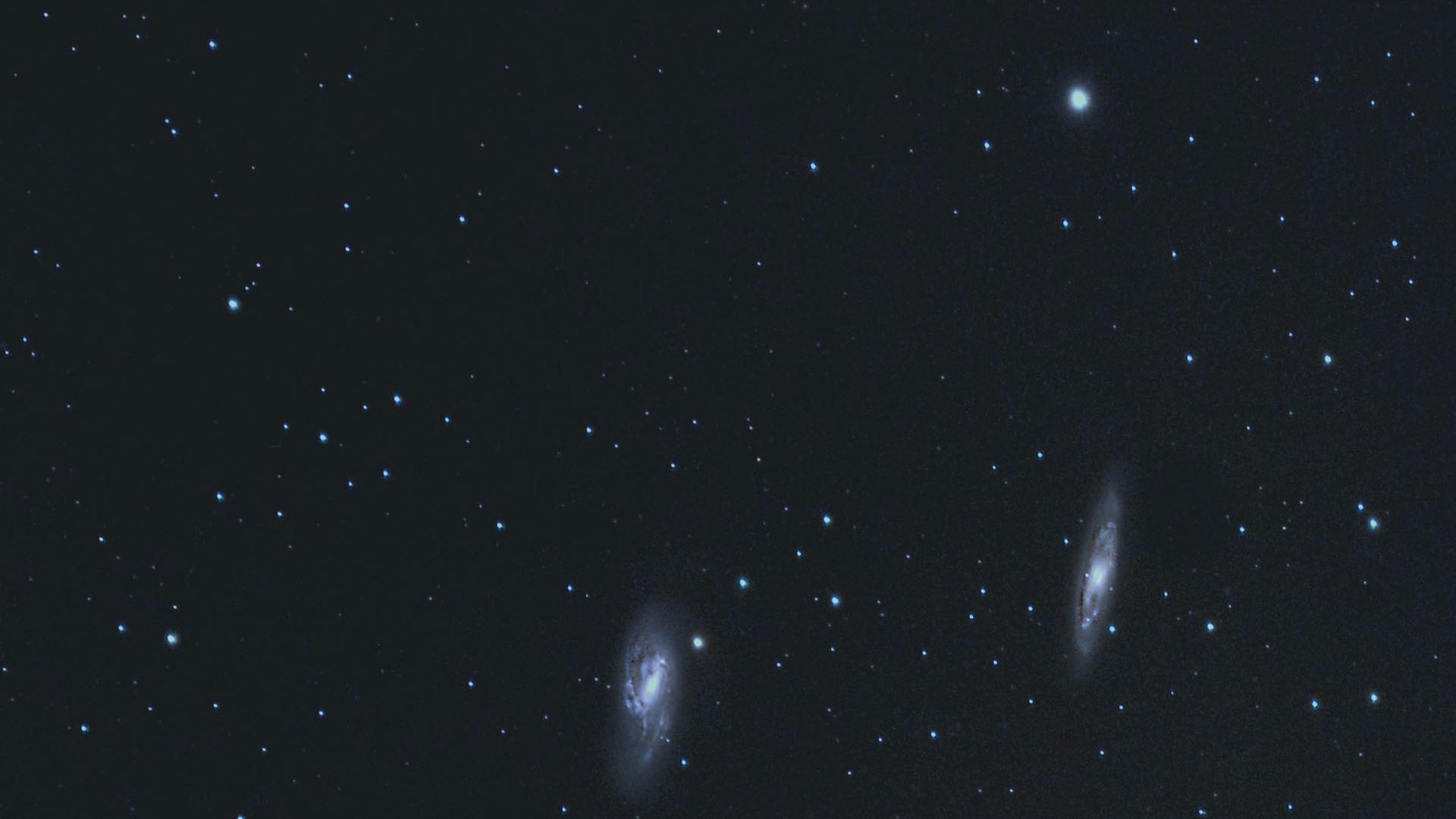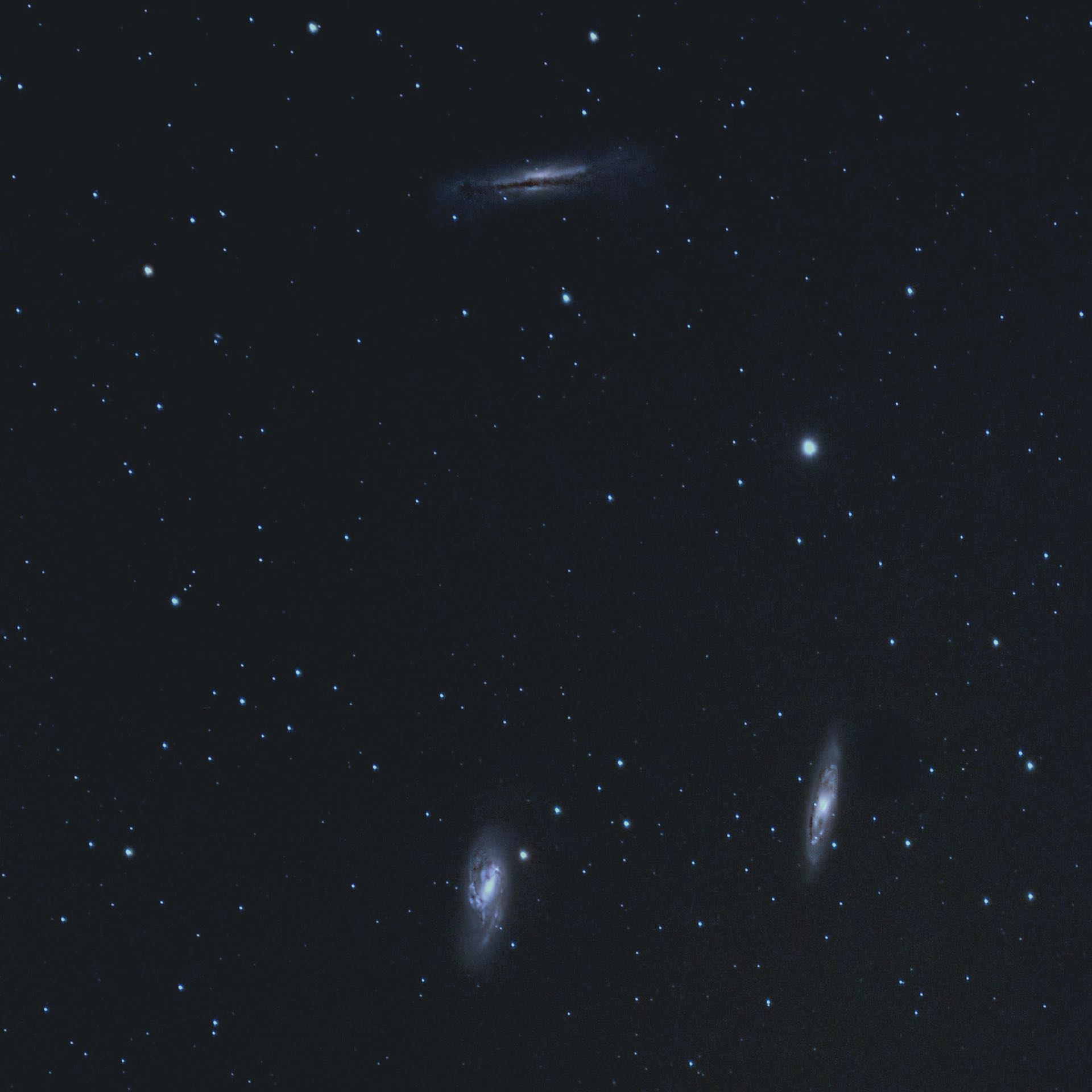Under Leo’s hind paws
The famous Leo Triplet contains two highlights and a challenge for observers with binoculars.
 H. Fischer
H. Fischer Two highlights and a challenge: M66 (bottom left), M65 and NGC 3628 (top). H. Fischer
Two highlights and a challenge: M66 (bottom left), M65 and NGC 3628 (top). H. FischerOn this tour we are drawn far outside our Milky Way, because the highlights of Leo are the Messier galaxies M65 and M66, which are around 30 million light years away. About 2° south of the star θ Leonis you will find 73 Leonis, a magnitude 5.32 faint star, which can easily be found with binoculars. If you have this in the centre of your field of view, two oval nebula specks appear about 1° to the east.
The eastern galaxy M66 is a little brighter, but even M65, which is just 20' away, can be distinguished as an oval speck in 8×30 binoculars, even under moderately dark skies. The Leo Triplet’s third galaxy, NGC 3628, is a challenge even for experienced observers. It can only be seen indirectly through 10×50 binoculars, and is faint - even under very dark skies.
A pair of faint dots
We mustn’t miss a binary star on this tour: τ Leonis is a good candidate, a magnitude 5 star which Jupiter passes to the north at a distance of about 2°. It can easily be found by star-hopping. Starting from Zavijava (β Vir), also known as Zavijah, which stands 5.5° to the east: τ Leonis is the southernmost and brightest of a four-star arc. Through binoculars, a magnitude 8 companion shows itself around 90" almost exactly due south. Binocular image stabilisation is helpful here to detect the faint speck. You should ensure that bright Jupiter is not in your field of view.
Directly north of τ Leonis, also in the aforementioned arc, is 83 Leonis, a multiple star whose brightest components (mag 6.2 and mag 7.9) are just 28" apart. They can hardly be distinguished from one another with hand-held binoculars, but with the help of a tripod you can easily make out the two stars, which are positioned in a north-south orientation.
 Objects at varying distances are to be found in the eastern section of Leo. J. Scholten
Objects at varying distances are to be found in the eastern section of Leo. J. ScholtenPractical tip: on the trail of Galilei
At the time of publication of this text, Jupiter is highly visible in Leo. A worthwhile object for binoculars? Well, the planet itself is simply a very bright round object, but its four brightest moons, also called the Galilean moons, named after their discoverer, show a lively interplay. Due to their brightness of magnitude 4.6 to 5.7, they can be seen through small binoculars, but due to their close proximity to each other and to their central celestial body, they are often hard to distinguish. A tripod or other stabilisation for the binoculars works wonders here. Which moon is located where can be worked out using the graphics in a night sky almanac or by using a planetarium program.
Author: Kay Hempel / Licence: Oculum-Verlag GmbH
